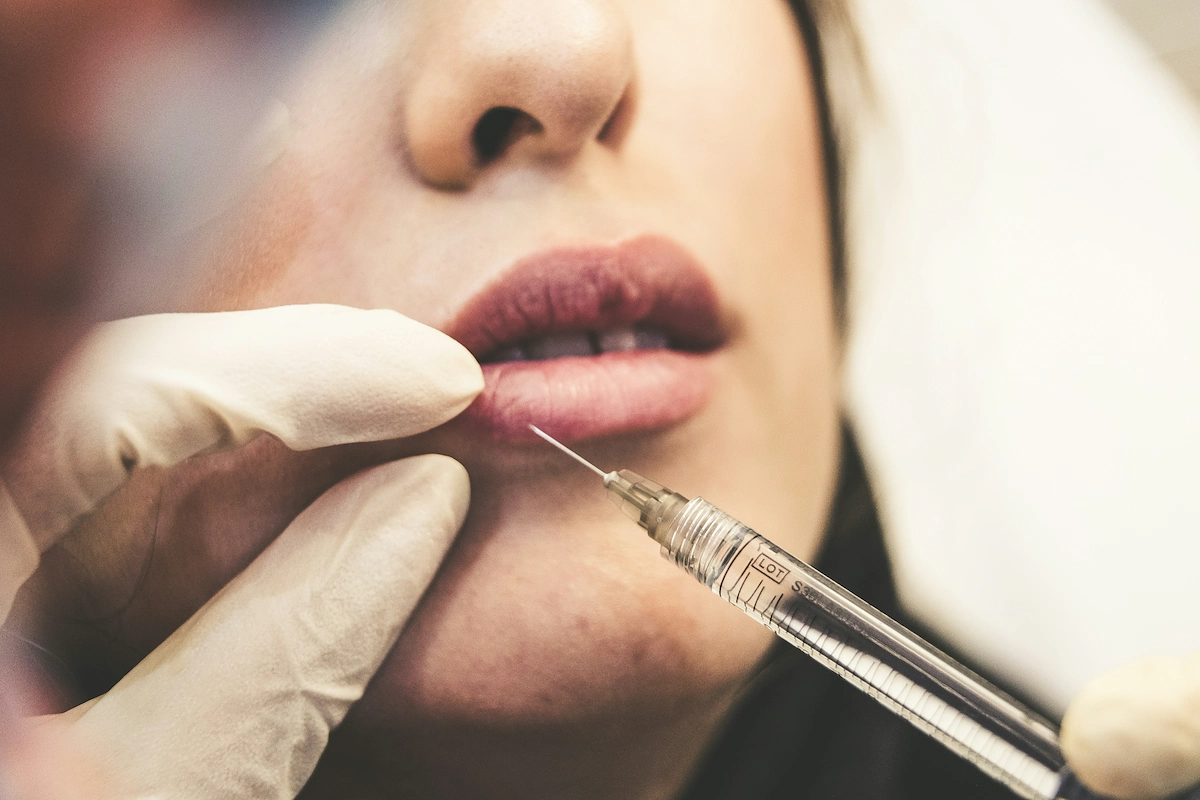Starting a botox business is a rewarding venture that blends medical skill with business savvy. The market for aesthetic procedures is worth billions, with steady demand for treatments that address everything from fine lines to preventative care.
This guide will take you through the practical steps of obtaining necessary licenses, securing funding, selecting the right location, and acquiring equipment to help you launch a successful botox business in the U.S.
Step 1: Create your business plan and research the market
Start by researching your local market. You can use data from the U.S. Census Bureau to understand neighborhood income levels and age demographics. This information helps you pinpoint your ideal client base from the very beginning.
A frequent misstep is to try and appeal to everyone. Instead, you might want to focus on a specific group, like young professionals who seek preventative treatments or an older clientele focused on rejuvenation.
Analyze your competition
Next, identify your direct competitors. Use Google Maps to find medspas and aesthetic clinics in your desired area. Review their websites for service menus and pricing to see what works and find gaps you could fill.
Also, check their social media presence and read customer reviews. This gives you a clear picture of their strengths and where you might offer a better experience for clients.
Forecast your startup costs
A realistic budget helps prevent surprises down the road. For a small, one-room operation, your initial investment will likely fall between $27,000 and $58,000. The initial product inventory, in particular, can catch new owners off guard.
- Licensing and Legal Fees: $2,000 - $5,000
- Malpractice Insurance (annual): $5,000 - $8,000
- Initial Product Inventory: $10,000 - $20,000
- Treatment Room Equipment: $5,000 - $15,000
- Marketing and Website: $5,000 - $10,000
Here are 3 immediate steps to take:
- Download demographic data for your top two target neighborhoods.
- Create a spreadsheet that lists five local competitors, their services, and prices.
- Draft a startup budget based on the cost ranges provided above.
Step 2: Set up your legal structure and get licensed
First, choose a business structure. A Limited Liability Company (LLC) is a popular choice because it protects your personal assets. You might also explore an S Corp election with your accountant, which can offer tax advantages on your profits once the business grows.
Navigate medical and business regulations
With your business entity chosen, the next step is medical compliance. Each state medical board has its own rules about who can own a medspa and supervise procedures. A frequent misstep is failing to secure a qualified medical director if you are not a physician yourself.
You will also need a general business license from your city or county, which usually costs between $50 and $400. In addition, some states require a specific permit to operate a medical facility. Be sure to check your state’s health department website for these forms.
Here are 3 immediate steps to take:
- Review your state medical board’s website for its specific rules on ownership and supervision.
- File for an LLC through your state's Secretary of State website.
- Contact your city clerk’s office to apply for a general business license.
Step 3: Secure your insurance and manage risk
Choose the right insurance coverage
Your most important policy is professional liability, also known as malpractice insurance. A standard plan offers $1 million per claim and a $3 million aggregate limit. Expect annual premiums to fall between $5,000 and $8,000 for this coverage.
You will also need general liability insurance for incidents like a client slip and fall. In addition, property insurance protects your expensive equipment from theft or damage. A frequent oversight is to assume one policy covers all risks, but each is distinct.
Find a specialized insurance provider
Work with an agent who understands the medspa industry. General insurers often miss the specific risks associated with aesthetic procedures, which can leave you underinsured. They understand the nuances of claims related to client dissatisfaction or adverse reactions.
You might want to get quotes from providers like Medical Protective, The Doctors Company, or CM&F Group. These companies have deep experience with aesthetic medicine and can tailor a policy to your exact needs. Compare at least two options before you decide.
Here are 3 immediate steps to take:
- Request a quote for a professional liability policy with $1M/$3M limits.
- Contact two specialized insurers, such as Medical Protective or The Doctors Company.
- Confirm your state’s workers' compensation laws if you plan to hire staff.
Step 4: Find your location and buy equipment
Look for a space between 150 and 250 square feet for a single treatment room. Check your city’s zoning laws to confirm the property allows for "medical office" or "personal service" use. A frequent oversight is to sign a lease before you verify zoning compliance.
When you negotiate your lease, you might want to ask for a tenant improvement (TI) allowance. This can help cover the cost to install a sink in the treatment room, a specific need for aesthetic practices. Landlords are often open to this for a multi-year lease.
Purchase your treatment room equipment
Your equipment is a major part of your startup budget. Focus on reliable, medical-grade items. You can find new and refurbished options from suppliers like McKesson or Medline. For Botox itself, you will need an account with Allergan Aesthetics, which requires a valid medical license.
- Motorized Treatment Chair: $1,500 - $4,000
- Medical-Grade Refrigerator: $500 - $2,000
- Autoclave Sterilizer: $1,000 - $3,000
- Magnifying Lamp with Light: $100 - $300
Here are 3 immediate steps to take:
- Research zoning regulations for two potential locations online.
- Contact a commercial real estate agent to ask about available small medical office spaces.
- Create a price comparison sheet for treatment chairs from two different suppliers.
Step 5: Set up your payment processing
Most clients will expect to pay with a credit card, debit card, or a digital wallet. You might also consider offering treatment packages, which clients can purchase upfront. This helps with cash flow and encourages repeat business.
A frequent stumble for new owners is not having a clear deposit and cancellation policy. You should require a small deposit to hold an appointment. This protects your time if a client fails to show up.
When you choose a payment solution, look for low transaction fees and no monthly charges. Many providers have rates that climb to 3% or more and require you to buy or rent special card readers.
For botox businesses that need to accept payments on-site, JIM offers a streamlined solution. With JIM, you can accept debit, credit, and digital wallets directly through your smartphone—just tap and done. At just 1.99% per transaction with no hidden costs or extra hardware needed, it's particularly useful for small clinics that want to avoid bulky terminals.
- Get Started: Download JIM app for iOS
- Make a Sale: Type the sales amount, hit sell, and ask your customer to tap their card or device on your phone
- Access Funds: Your money is available right on your JIM card as soon as the sale is done - no waiting for bank transfers
Here are 3 immediate steps to take:
- Draft a clear deposit and cancellation policy for your website.
- Compare the transaction fees of two different payment solutions.
- Download the JIM app to explore its features on your phone.
Step 6: Secure your funding and manage finances
Explore your loan options
You might want to start with an SBA 7(a) loan, which is designed for small businesses. Lenders typically look for a personal credit score above 680. For a new botox practice, loans often range from $30,000 to $100,000 with interest rates around Prime + 3-5%.
Another path is equipment financing. This type of loan is secured by the equipment itself, like your treatment chair or autoclave. This can make it easier to qualify for than a general business loan, especially if your credit history is still developing.
Calculate your working capital
With funding in mind, you need a clear picture of your operating costs for the first six months. This is the cash you need on hand to cover expenses before you turn a profit. One thing to watch out for is focusing only on startup costs and forgetting about day-to-day operations.
Plan to have at least $30,000 to $50,000 in working capital. This buffer covers rent, insurance premiums, product replenishment, and marketing while you build your client list. It ensures you can operate smoothly without financial stress from the start.
Here are 3 immediate steps to take:
- Check your personal credit score through a free service.
- Contact your bank to ask about its SBA 7(a) loan application process.
- Create a spreadsheet to calculate your estimated 6-month operating expenses.
Step 7: Hire your team and set up operations
Build your core team
Your first hire will likely be an Aesthetic Nurse Injector. Look for a Registered Nurse (RN) or Nurse Practitioner (NP) with a state license and specific certification in neurotoxin injections. Expect to pay between $45 and $65 per hour.
Some new owners hire injectors without aesthetic experience to save on costs. This often backfires, as inconsistent results can damage your reputation. It is better to invest in a skilled professional from the start.
You might also need a Front Desk Coordinator to manage appointments and payments. This role typically pays $18 to $25 per hour and frees up your injector to focus solely on clients.
Choose your management software
Once your team is outlined, you need a system to manage operations. Software like Vagaro or Boulevard combines scheduling with electronic medical records (EMR). Monthly fees usually range from $100 to $300, depending on features.
As a benchmark, a solo injector can generate between $250,000 and $400,000 in annual revenue. This helps you project income and decide when to expand your team or services.
Here are 3 immediate steps to take:
- Draft a job description for an Aesthetic Nurse Injector with certification requirements.
- Schedule a demo with Vagaro or Boulevard to compare their features.
- Calculate your first-year revenue target based on the solo injector benchmark.
Step 8: Market your business and acquire customers
Build your online presence
Your first clients will likely find you online. You should claim and optimize your Google Business Profile immediately. Add high-quality photos of your space and encourage your first few clients to leave reviews. Many new owners miss this step and lose out on local search traffic.
Next, focus on one or two social media platforms, like Instagram or Facebook. Run targeted ads with a compelling new client offer, such as "20 units of Botox for $250." A realistic customer acquisition cost (CAC) in this industry is between $100 and $300 per new client.
Create a referral pipeline
Word-of-mouth is powerful in aesthetics. You might want to implement a referral program from day one. For example, offer a $50 credit to an existing client when they refer a friend who completes a treatment. The new client could also receive a small discount.
Also, consider partnerships with complementary local businesses. You could connect with hair salons or high-end fitness studios. Offer to provide a special discount for their clients, which creates a steady stream of qualified leads for your practice.
Here are 3 immediate steps to take:
- Claim and complete your Google Business Profile with at least five professional photos.
- Draft a "new client" special to use for your first social media ad.
- Outline a referral program that rewards both the existing and new client.
Step 9: Set your pricing strategy
You have two main pricing models to choose from: per unit or per area. Per-unit pricing is transparent and common, with rates typically between $12 and $18 per unit. This means a 20-unit forehead treatment would cost the client $240 to $360.
Alternatively, you can price per treatment area. For example, you might charge a flat rate of $300 for frown lines or $500 for both forehead and frown lines. This model simplifies pricing for clients but requires you to accurately estimate product usage.
This brings us to your profit margin. A 100-unit vial of Botox costs about $600, making your direct cost $6 per unit. If you set your price at $14 per unit, your gross profit is $8 for every unit sold, a markup of over 130%.
A frequent temptation for new owners is to price too low to attract clients. This can devalue your service and hurt long-term profitability. Instead, you might want to research competitors by checking their websites or calling them to ask for their rates.
Here are 3 immediate steps to take:
- Decide if you will use per-unit or per-area pricing for your services.
- Call two local medspas to ask for their price on a standard 20-unit Botox treatment.
- Calculate your gross profit margin based on a $15 per-unit sale price.
Step 10: Maintain quality and scale your practice
Your reputation depends on consistent, high-quality results. You can track this by sending a simple post-treatment survey to every client. Aim for a Net Promoter Score (NPS) of 50 or higher. Also, monitor your rate of follow-up corrections, which should stay below 2%.
A frequent misstep is to scale too quickly without a formal quality process. This can lead to inconsistent client outcomes. You might want to implement a quarterly peer review where injectors can discuss complex cases and share techniques to maintain a high standard of care.
Know when to grow
With quality standards in place, you can look for growth signals. When a solo injector is booked more than 80% of the time for three straight months, it is a good time to hire another. Reaching the $400,000 annual revenue mark is another strong indicator.
Your practice management software, like Vagaro or Boulevard, has features to support this expansion. Use their reporting tools to track provider productivity and manage multiple calendars. This helps you make data-driven decisions instead of just guessing when to expand.
Here are 3 immediate steps to take:
- Create a one-question post-treatment survey to measure client satisfaction.
- Set a quality benchmark, such as keeping your correction rate under 2%.
- Explore the multi-provider features in your current scheduling software.
Your botox business journey combines medical expertise with smart operations. Remember, client trust built on consistent, quality results is your most valuable asset. You have the roadmap, now go build your practice.
And when you welcome your first clients, make payments easy. JIM turns your phone into a card reader for a flat 1.99% fee, with no extra hardware. It is a simple way to manage transactions from day one. Download JIM.















